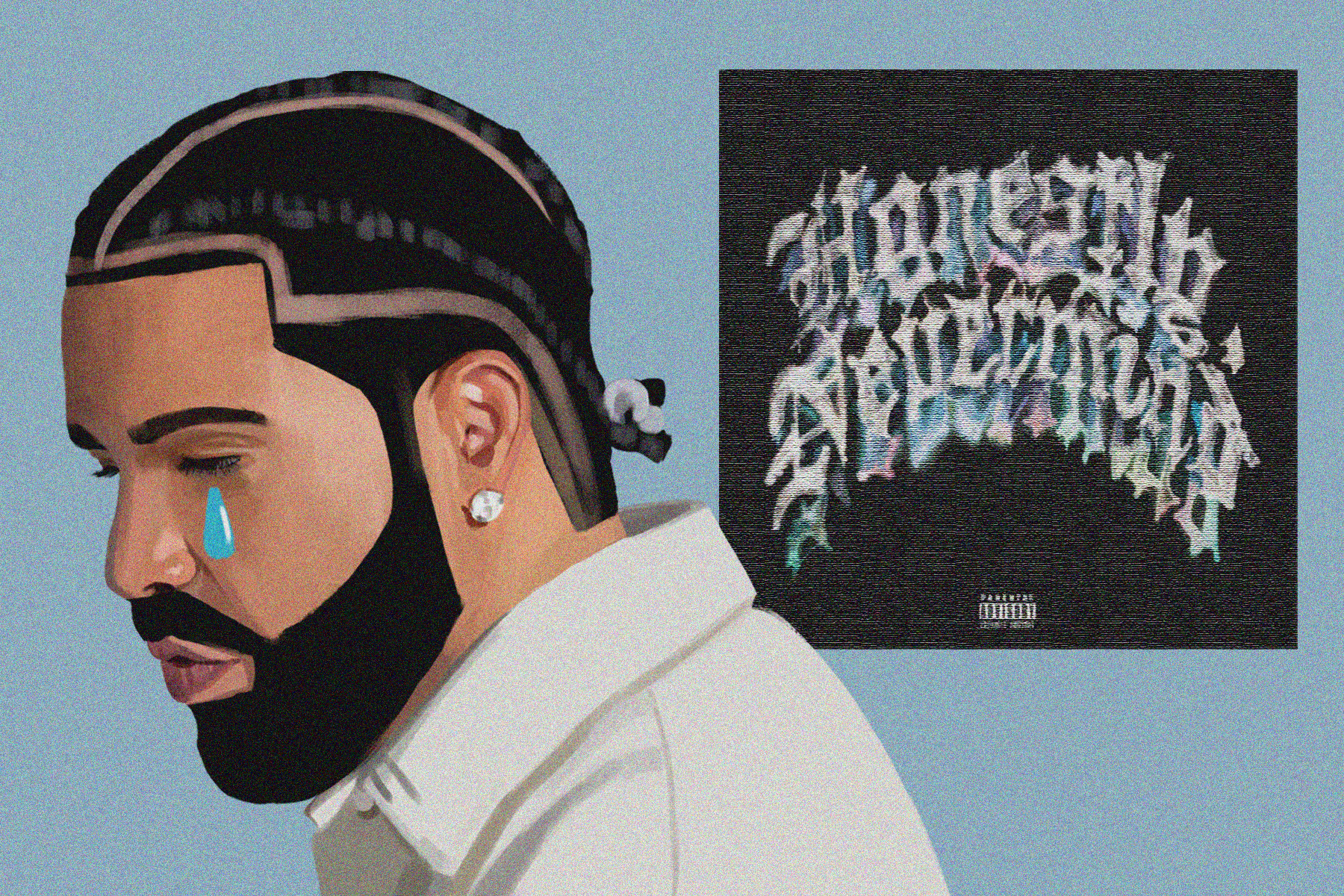Hip-hop is entering its fifth decade of existence, and over its generation-spanning life, the genre has proven to be one of music’s most versatile art forms. Built upon the foundation of sampling existing instrumentals and melodies, hip-hop has lent itself to genre crossovers as producers seek to inject their work with new sounds. Tyler, the Creator and Post Malone are two artists who have consistently sought to produce music that, while rooted in the traditions of hip-hop, largely exists beyond the bounds of the genre.
One notable artist who has largely chosen to forego this route is Drake, arguably the most prolific rapper active in the music industry. His discography boasts numerous chart-topping hits and critically acclaimed deep cuts, yet many are pop-rap singles. “Honestly, Nevermind,” the Toronto-based rapper’s seventh studio album, is his first true multi-genre project, attempting to marry his rap style with traditional house sounds. Released on June 17, the project sought to generate several summer dance anthems, yet its clumsy execution leaves much to be desired.
The new album is Drake’s first foray into long-form genre melding, though the artist has dabbled with combining sounds before. “Passionfruit,” off of the artist’s 2017 mix tape “More Life,” is a subdued tropical dance house track that sees Drake transform his typical punchy rap delivery into a more melodic flow. On his fifth studio album, “Nice for What” represents a more even mixture of rap and early R&B sensibilities, using a pop-rap instrumental to fuse the two sounds.
These singles originate from lengthy projects that mostly exist within the confines of hip-hop, and the tracks represent sonic detours rather than defining points of their respective works. They are the exception rather than the rule for Drake’s discography, and Drake has largely avoided mimicking classic house music until now. Though his melding of the two genres is unprecedented within his own catalog, house music has long been a musical form of choice for artistic experimentation.
House music originated in Chicago during the early 1980s as a new form of dance music, quickly becoming popular in numerous clubs around the world. Defined by its thumping bass lines, synthesized leads and approximately 120 beats per minute cadence, the genre has become one of the most prominent forms of party music. Its relative simplicity has prompted many artists to dabble in the genre and fuse its sound with others, spawning multiple subgenres.
Hip-house is one of the more prominent examples, a sound that adopts the synthesized instrumentals of house music and places rap verses atop them. The verses, as opposed to driving the percussive instrumentation of a traditional rap track, are paced to fit within the melodic structure of the synth instrumentals, in effect limiting what the vocal artist can accomplish. Drake’s effort to meld genres could have operated within this framework, yet his unique delivery and compositional style pose many problems for creating a cohesive mix.
Many of Drake’s projects establish their aesthetic qualities on the first full-length track, and “Honestly, Nevermind” is no different, establishing its reductive house atmosphere with strangely auto-tuned falsetto lyrics about relationship drama after the short intro on “Falling Back.” Its tempo is consistent with traditional house, though the instrumentation presented atop the unusually hollow drumbeats is more reminiscent of a GarageBand sample than a professionally produced track. The track that follows almost blends into the ending of “Falling Back,” as “Texts Go Green” preserves a similar tempo and time signature, though introduces a new cadence with a syncopated synth beat besides the steady bass. The consistency the track attempts to build is offset by Drake’s vocals, which, with its off-beat, soft delivery, add a layer of complexity that diminishes the hip-house sound he is trying to build.
The track also introduces a theme that is one of the project’s greatest hindrances: Drake’s vocal relation to his instrumentals. In many popular house tracks, the percussive bass notes or strobe synths create defined patterns or rhythms that give repetitive windows for the artist to deliver the lyrics. On “Honestly, Nevermind,” Drake refuses to structure his writing around the form of the instrumental, instead awkwardly delivering inconsistent lyrics while the tracks sheepishly progress in the background.
The album reaches its most convoluted form when it attempts to further subjugate house instrumental qualities to the whims of Drake’s hip-hop style, a combination that is first fully realized on the seventh track, “Sticky.” The syncopated beat style returns from the early tracks, yet Drake’s firmer rap flow adds an additional percussive effect that overwhelms the house synths, which by now have taken a back seat entirely. The ad-libs interspersed with Drake’s uninspired relationship bars are reminiscent of his earlier work and counter any effort the track might make at standing out from the rest of his discography.
If Drake’s bizarre delivery isn’t enough to dissatisfy a listener, his lyricism likely will. “Sticky” exemplifies the artist’s inability to pen subject material that can be transformed into a likable club anthem, as most of what he has to say is incredibly self-centered and inward-looking. From lines such as “I still turn to a CEO, so the lifestyle she respect” and “Every song that I made is ringin’ like I got engaged,” it is evident that Drake’s writing is extremely limited and seems to focus on his personal life of success and excess, a theme that is hard to appreciate in a dance track.
Unfortunately for Drake’s genre-bending efforts, the album’s high point comes on a track where the artist abandons his rap delivery entirely and fully embraces the house aesthetic. “Massive” is a flowery house anthem with a satisfying strobe synth pulse and lively vocals from Drake, who fully embraces a pop sound. The track would fit into a purist house playlist without question, with instrumental breaks that almost cross into EDM. It is not a coincidence that its success is in part due to Drake’s vocal absence for much of its length, as the instrumental breaks pad much of the song and minimize his ability to deviate into self-obsession. The track is a fun diversion, yet its failure to demonstrate a marriage of the album’s two genres is further evidence of the artist’s inability to navigate two simple sonic landscapes simultaneously.
The album ends with an unceremonious rap track featuring Southern hip-hop rapper 21 Savage. The song’s punchy 808 bass is an instantly recognizable hip-hop staple and completely undermines the traditional house low-end sound that existed on the previous tracks. 21 Savage’s verse is a full-blown lane change into Atlanta trap music, a style that should not be the final note of a hip-house project. In the same way that “Massive” is a relatively inoffensive dance house anthem, the album’s finale in “Jimmy Cooks” would not be so disappointing on its own merits if it didn’t punctuate an album that failed to innovate beyond repeating tired musical conventions.
“Honestly, Nevermind” is disadvantaged because it is not allowed to form its own identity, bouncing too frequently between the conventions of standard hip-hop and predictable house without bringing anything unique to the table. Drake is notorious for continually churning out music and listeners would be wise to pass over this disappointing release hoping his inevitable eighth full-length project brings something worth listening to.

















